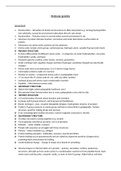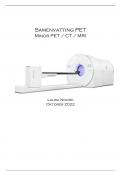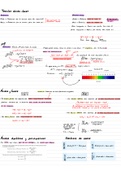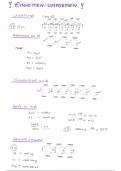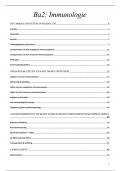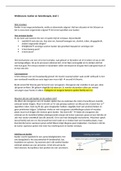1. WHAT?
2. WHY?
3. HOW?
4. STANDARD HOLDING PATTERN (NO WIND)
5. OBSTACLE CLEARANCE
6. HOLDING INSTRUCTIONS AND PHRASEOLOGY
7. SPEEDS, RATE OF TURN, TIMING, DISTANCE AND
LIMITING RADIAL
8. CORRECTIONS IN TIMING AND IN HEADING
9. ENTRIES
10. HOLDING 2 NDB
11. HOLDING 2 MINUTES
12. USE OF VOR
13. USE OF ADF
14. DEPARTING THE PATTERN
15. WHEN LOST IN THE PATTERN
Briefings IRI 07 holdings rev 3 :05 21 Page 1
, 1. WHAT?
• Holding is:
o A predetermined maneuver (2 half turns
with 2 straight and level legs)
o To keep aircraft within a specified airspace
o Awaiting further clearance from ATC.
2. WHY?
• Due to:
o Traffic
o Weather conditions But losing:
o Technical problems
- Time
o Not ready for the approach
o After a Missed approach - Fuel
- Duty time
- Maintenance time
So losing money!!!!
3. HOW?
• A standard holding pattern uses right turns
• A non-standard holding pattern uses left turns.
• In C182, 3’ (≈ 6 nm @ 140 Kts) before reaching the beacon: reduce power @
17”/2300 RPM, mixture rich = 45% < PWR < 55% = 120 Kts
The ATC clearance will always specify left turns when a non-standard pattern is to
be flown. Or simply drawn on the chart:
Briefings IRI 07 holdings rev 3 :05 21 Page 2
,Briefings IRI 07 holdings rev 3 :05 21 Page 3
, 4. STANDARD HOLDING PATTERN (NO WIND)
• The aircraft follows the specified course inbound to the holding fix,
• Turns 180° to the right,
• Flies a parallel straight course outbound for 1 minute,
• Turns 180° to the right,
• And flies the inbound course to the fix.
1.2.2 All turns are to be made at a bank angle of 25° or at a rate of 3° per
second, whichever requires the lesser bank.
1.2.8 If for any reason a pilot is unable to conform to the procedures for
normal conditions laid down for any particular holding pattern, air traffic
control should be advised as early as possible.
Briefings IRI 07 holdings rev 3 :05 21 Page 4
, 5. OBSTACLE CLEARANCE
2.1 HOLDING AREA
The holding area includes the basic holding area and the entry area:
a. the basic holding area at any particular level is airspace required at that level to
encompass a holding pattern based on allowances for aircraft speed, wind effect,
timing errors, holding fix characteristics, etc.;
b. the entry area includes the airspace required to accommodate the specified
entry procedures.
2.2 BUFFER AREA
The buffer area is the area extending 5.0 NM beyond the boundary of the holding
area within which the height and nature of obstacles are taken into
consideration when determining the minimum holding level usable in the holding
pattern associated with the holding area.
2.3 MINIMUM HOLDING LEVEL
2.3.1 The minimum permissible holding level provides a clearance of at least:
– ≈ 1000 ft above obstacles in the holding area;
– A value provided in Table IV-2-1 above obstacles in the buffer area.
The minimum holding altitude to be published shall be rounded up to the nearest 100
ft as appropriate.
2.3.2 Furthermore, over high terrain or in mountainous areas obstacle clearance up to
a total of ≈ 2000 ft is provided to accommodate the possible effects of turbulence,
downdrafts and other meteorological phenomena on the performance of
altimeters.
Briefings IRI 07 holdings rev 3 :05 21 Page 5
,Briefings IRI 07 holdings rev 3 :05 21 Page 6
, 6. HOLDING INSTRUCTIONS AND PHRASEOLOGY
If an aircraft arrives at a clearance limit before receiving clearance beyond the fix,
ATC expects the pilot to maintain the last assigned altitude and begin holding in
accordance with the charted holding pattern.
If no holding pattern is charted and holding instructions have not been issued,
enter a standard holding pattern on the course on which the aircraft approached the
fix and request further clearance as soon as possible.
Normally, when no delay is anticipated, ATC will issue holding instructions at least 5
minutes before the estimated arrival at the fix.
Where a holding pattern is not charted, this is the ATC clearance :
ATC instructions will also be issued whenever:
1. It is determined that a delay will exceed 1 hour.
2. A revised EFC or EAT (Expected Approach Time) is necessary.
3. In a terminal area having a number of navigation aids and approach procedures, a
clearance limit may not indicate clearly which approach procedures will be used. On
initial contact, or ASAP thereafter, approach control will advise the pilot of the type of
approach to expect.
4. Ceiling and/or visibility is reported as being at or below the highest “circling
minimums” established for airport concerned. ATC will transmit a report of current wx
conditions and subsequent changes, as necessary.
5. An aircraft is holding while awaiting approach clearance, and the pilot advises ATC
that reported weather conditions are below minimums applicable to the operation.
In this event, ATC will issue suitable instructions to aircraft desiring either to continue
holding while awaiting weather improvement or proceed to another airport.
- EAT : COMPULSORY given by ATC
- If at the EAT we do not receive a clearance, we have to ask for one to the ATC !
Briefings IRI 07 holdings rev 3 :05 21 Page 7
,Passing the beacon (the 4 T’s)
Example (and to be done at the 4 corners of the holding – to be adapted to the
situation) :
TURN : turn to the right to an intercept heading 075°
TIME : TIME OFF (passing the beacon)
TWIST : display the radial abeam 345 FROM on the V.O.R.
TALK : announce the entry in the holding to ATC.
(THROTTLE) : If we have to descend (or to climb …)
"F-GKDU entering the holding at GOSLY, 3000 feet".
Briefings IRI 07 holdings rev 3 :05 21 Page 8
, 7. SPEEDS, RATE OF TURN, TIMING, DISTANCE
AND LIMITING RADIAL
1.2.1 Holding patterns shall be entered and flown at or below those indicated
airspeeds given in Table IV-1-1.
NOTE: The speeds in Table IV-1-1 are converted and rounded to the nearest
multiple of five for operational reasons and, from the standpoint of operational
safety, are considered to be equivalent.
1.2.4 Outbound timing begins over or abeam the fix whichever occurs
LATER.
If the abeam position cannot be determined, start timing when TURN to
outbound is COMPLETED.
HOLDING SPEEDS
AND DEVIATIONS
Holdings should not
be misinterpreted as
racetrack (letdown)
patterns that are
calculated on criteria
for the initial
approach segments
of an Instrument
Approach
Procedure.
The speeds for initial
approach segments
are as shown in Table
III-1-1 and III-1-2.
Individual Air Traffic
Control (ATC) State
“Rules and
Procedures” pages
provide information
indicating which of
the following holding
speed tables, if
applicable, is
applied by the
individual State.
ALL SPEEDS ARE IAS
Briefings IRI 07 holdings rev 3 :05 21 Page 9
, 1.2.5 If outbound leg length is based on DME distance,
outbound leg terminates as soon as limiting DME distance is attained.
1.2.6 In the case of holding away from the station, where the distance from the
holding fix to the VOR/DME station is short, a limiting radial maybe specified.
1.2.7 If the limiting radial is first encountered, this radial should be followed until a
turn inbound is initiated, at latest where the limiting DME distance is reached.
Briefings IRI 07 holdings rev 3 :05 21 Page 10

